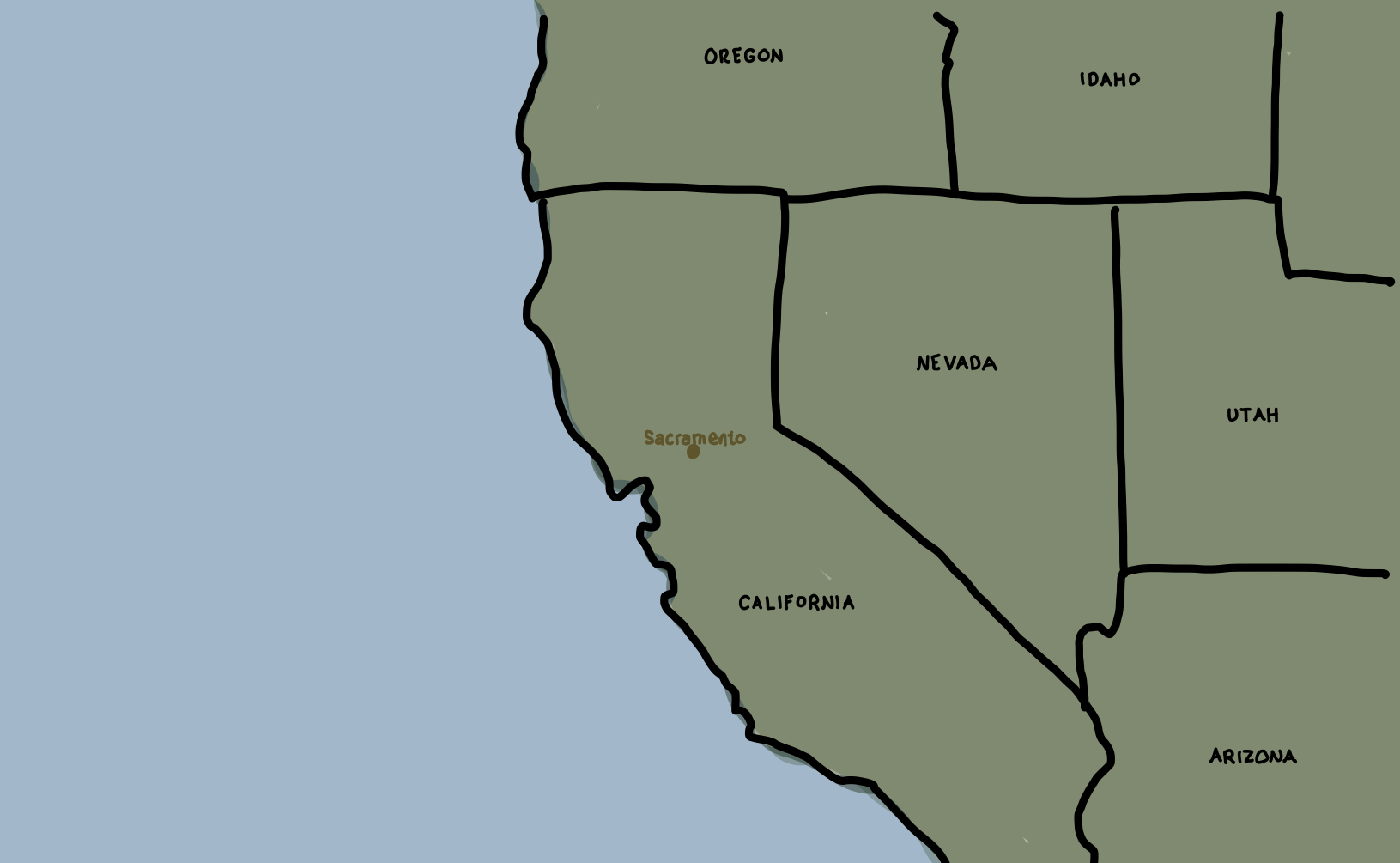
Judging by the number of Yalies who can’t point to Sacramento on a map, we need to offer a new course on elementary geography next semester.
To set the scene: it was one of the first duty nights of fall. Back when the high of moving into college was still pumping us with energy, and the rush of trying to find our forever-friends turned every person into a potential conversation partner. The September heat still lingering past sundown. The smell of takeout wafting through the air. The room packed with sweaty 18-year-olds, fanning themselves with paper plates and floating from couch to windowsill to armchair, looking for a place to perch.
We were sharing intro spiels — major, college, hometown — and learning how to make small talk — filling lulls of conversations with recent Yale revelations — the dining halls! the doors! — and asking how everyone was settling in.
As I was leaning on the back of an armchair, crammed between a windowsill and some other first-years from my college, the conversation turned to hometowns. Specifically, the question of what our favorite part was — or what we would miss the most.
Moving out of state for college means losing that little bit of shared context with people. To describe Sacramento is to speak in relation; three hours eastward from the bay, two hours westward from the mountains, and no, not close at all to LA. Many people say the best part of living in Sacramento is how close you are to all of Northern California’s interesting parts: the Pacific Ocean, San Francisco’s city life, Napa’s vineyards, and skiing in the Sierra Nevadas.
I would like to mount a defense for Sacramento as a gem in its own right. In complete transparency, I really live in a suburb around half an hour away. The city sits at the tip of the Central Valley, which is bookended on two sides by foothills of rolling grass that turn gold in the summer sun. To get to the city, I drive down a highway that splits between the hills, going up and down and up and down again until the very last crest, where, for a few moments at the top, the whole valley opens up in front of you and the skyline of the city glimmers in the distance.
As I gained my independence with driving, my friends and I took it upon ourselves to explore the city on our free afternoons and weekends.
Sacramento was born a gold rush town, and Old Sacramento still looks straight out of a Western film with its wooden storefronts and old-fashioned candy shops. The top of the parking garage there affords the best view of the Tower Bridge — California’s real golden bridge — over the Sacramento River.
A short walk away is the Golden One Center: the home of the Sacramento Kings, where a purple beam shoots into the sky for the entire city to see when they win a home game. The city is interspersed with government buildings, but it doesn’t feel like the head of the nation’s largest economy. Much of the city is still bordered by farmland and open space. At the peaks of the summer heatwaves, time seems to slow to a crawl.
On 12th street is Hiso, the Asian Fusion restaurant we frequented after school dances and concerts, where I found the city’s best-fried potstickers and Thai Tea. East Sacramento is known for the picturesque houses and sycamores of the “Fab 40s,” where the whole town comes together to see the Christmas lights. I’ve frequented any cafe with a mocha and pleasant ambiance; I’ve combed through every used bookstore for Joan Didion’s works. She came from this city too, you know.
Film junkies may make the Sacramento connection to Greta Gerwig’s “Ladybird.” The main character: Angsty Teenage Girl with Pink Hair who wants to escape the city and “go where culture is, like New York… or at least Connecticut.” At times, Ladybird is downright insufferable, but you can’t help but root for her.
Funnily enough, I had my own pink hair phase when I was 17. And the airport from which Ladybird makes her escape to the East Coast is my airport — the same one where I said goodbye to my family before flying to Yale for the first time.
Gerwig is a Sacramento native herself, and the city is as much of a character in the film as a backdrop. Ladybird experiences the trials and tribulations of high school relationships — platonic, romantic, and familial — at the city’s most iconic sights. The McKinley Rose Garden, the Tower Bridge, and even the mural of a Midtown convenience store make their appearances.
Right before I got on the plane to go to Connecticut, my best friend and I drove around the city one last time. We laid in the grass in front of the State Capital and took photos in front of places featured in the movie.
Ladybird ends with a phone call. “Hey, Mom. Did you feel emotional the first time that you drove in Sacramento? I did, and I wanted to tell you, but we weren’t really talking when it happened. All those bends I’ve known my whole life, and stores, and the whole thing.” I took my last drive; I tried to commit every detail to memory.
So here I am, “where the culture is.” Sacramento is not exactly my hometown, but in my mind, it is still my city. I couldn’t tell you one thing I miss most; one store or park or tree-lined avenue would be inadequate ambassadors. Sacramento is someplace where everything is more than the sum of its parts. Maybe that’s why this capital city flies under the radar. Maybe that is my favorite part.







